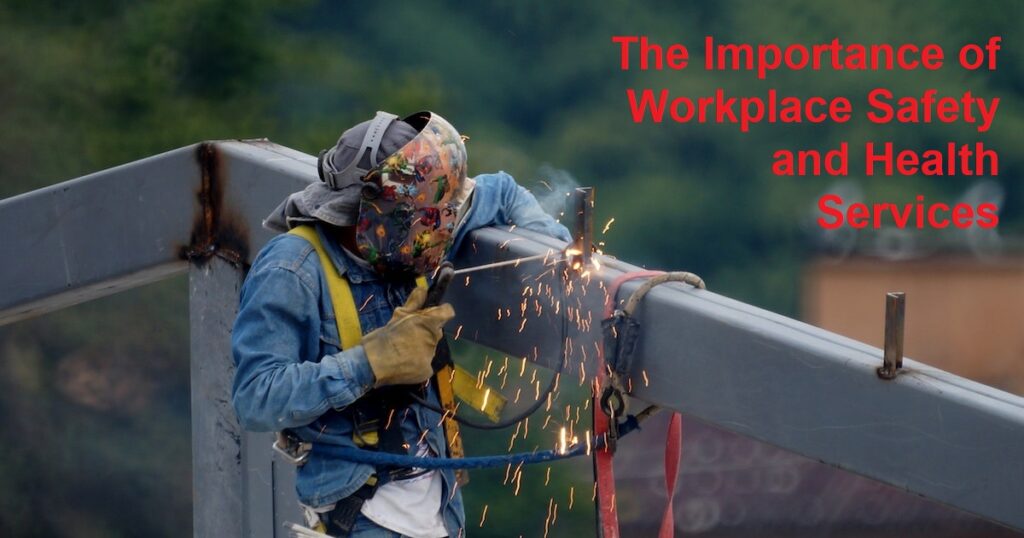When it comes to working in any industry, safety should always be a top priority. Industrial safety, occupational safety, and workplace health are crucial areas that employers must address to ensure their workers’ well-being.
Occupational Safety and Health Administration (OSHA) is the main regulatory body that oversees workplace safety and health. This article will explore the fundamentals of occupational safety and health, the role of OSHA officers, and the importance of workplace safety and health services.
Understanding Industrial Safety and Occupational Health
Occupational safety and health (OSH) refers to the field of study and practice that deals with the prevention of work-related injuries and illnesses. This field encompasses various disciplines, including safety engineering, industrial hygiene, environmental health, and occupational medicine. The primary goal of OSH is to create a safe and healthy work environment for employees by identifying and controlling potential hazards.
Industrial safety is a branch of OSH that focuses specifically on safety issues in industrial settings, such as factories, mines, and construction sites. It involves identifying and assessing risks associated with equipment, machinery, and materials, and developing strategies to mitigate them. Occupational health, on the other hand, focuses on the physical and mental well-being of workers. It includes identifying and controlling workplace hazards that could lead to health problems, such as exposure to toxic chemicals or repetitive strain injuries.
The Role of OSHA Officers
The Occupational Safety and Health Administration (OSHA) is a federal agency in the United States that is responsible for enforcing safety and health regulations in the workplace. OSHA officers are the agency’s front-line representatives who conduct inspections, investigate complaints, and issue citations and penalties for non-compliance. They play a critical role in ensuring that employers adhere to OSHA’s standards and regulations to protect workers from workplace hazards.
To become an OSHA officer, one must undergo extensive training and pass a series of exams. OSHA officers must have a solid understanding of safety and health regulations, as well as the ability to identify potential hazards and develop strategies to mitigate them. They must also be skilled communicators, as they often need to educate employers and workers about safety issues and regulations.

The Importance of Workplace Safety and Health Services
Employers have a responsibility to provide a safe and healthy work environment for their employees. This not only benefits the employees themselves but also the company as a whole. Workplace safety and health services are essential for ensuring that workers are protected from potential hazards and that they receive prompt medical attention if an accident or illness does occur.
Some workplace safety and health services include:
- Regular safety inspections and hazard assessments
- Employee training on safety procedures and equipment
- Personal protective equipment (PPE) provision and maintenance
- First aid and emergency response services
- Health and wellness programs
Investing in workplace safety and health services can help employers reduce the risk of workplace accidents and injuries, which can ultimately lead to increased productivity and profitability.
Conclusion
Industrial safety, occupational safety, and workplace health are critical areas that employers must address to ensure their workers’ well-being. OSH is the field that deals with the prevention of work-related injuries and illnesses, while OSHA is the federal agency responsible for enforcing safety and health regulations in the workplace. Workplace safety and health services are essential for protecting workers from potential hazards and ensuring that they receive prompt medical attention if an accident or illness does occur.
By prioritizing safety and health in the workplace, employers can create a positive work environment that benefits both employees and the company. Investing in workplace safety and health services is a smart business decision that can lead to increased productivity, profitability, and overall employee satisfaction.
FAQs
- What is the difference between occupational safety and occupational health?
Occupational safety is focused on preventing accidents and injuries in the workplace, while occupational health is concerned with preventing work-related illnesses and diseases. Both occupational safety and occupational health are important aspects of workplace safety and should be addressed by employers to ensure the safety and well-being of their employees. - What are some common workplace hazards that employers should be aware of?
Some common workplace hazards include falls, slips and trips, electrocution, fires and explosions, chemical exposure, and ergonomic injuries. Employers should conduct regular safety assessments to identify and mitigate potential hazards in the workplace and provide appropriate safety equipment and training to employees. - How does OSHA enforce workplace safety regulations?
OSHA enforces workplace safety regulations by conducting inspections of workplaces to ensure compliance with safety standards, responding to complaints of safety violations, and imposing penalties and fines for noncompliance. OSHA also provides training and resources to help employers and employees understand and comply with safety regulations. - What should I do if I witness a workplace safety violation?
If you witness a workplace safety violation, report it to your employer or supervisor as soon as possible. If the violation is not addressed or resolved, you can file a complaint with OSHA, who will investigate the matter and take appropriate action. - What are some common workplace safety training programs that employers offer to their employees?
Common workplace safety training programs include hazard communication, fall protection, emergency preparedness, and personal protective equipment (PPE)training. Employers should provide regular safety training to employees to ensure they are equipped with the knowledge and skills necessary to prevent workplace accidents and injuries.
